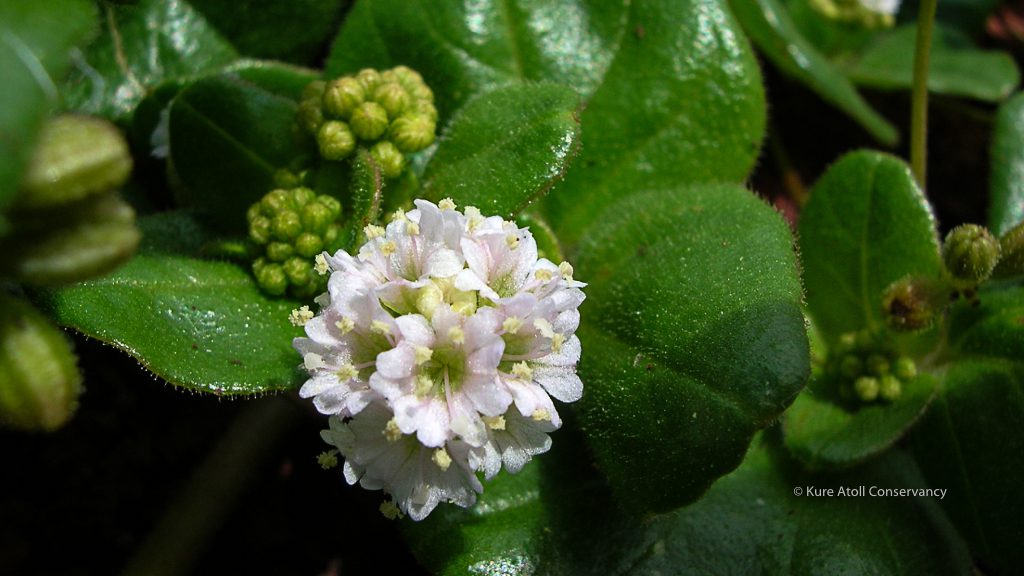ʻAlena
Boerhavia repense
| Stated-recognized | Indigenous |
| NatureServe Heritage Rank | Vulnerable |
| North American Waterbird Conservation Plan |
High Concern |
| Regional Seabird Conservation Plan |
USFWS 2005 |
| Stated-recognized | Indigenous |
| NatureServe Heritage Rank | Vulnerable |
| North American Waterbird Conservation Plan |
High Concern |
| Regional Seabird Conservation Plan |
USFWS 2005 |

Boerhavia repens is a native plant called ʻalena. It is a creeping vine easy to distinguish from other plants on Kure. One of the few instances ʻalena is mistaken for another plant is when it is confused with Flaveria trinervia. The branching nerve pattern on Boerhavia readily distinguishes it from the 3-nerved pattern found on Flaveria. Another instance would be with its congener, B. coccinea, which was once a common sight throughout camp but as for 2018 this weed is seldom encountered.
The seed bank for ʻalena and nohu (T. cistoides) persisted during the invasion of Verbesina encelioides. When Verbesina was being removed from restoration areas, ʻalena and nohu returned imperviously as ground coverage. With the strong seed bank and comeback, this made Kure restoration efforts different than Midway’s restoration efforts. There were not as many natives to naturally move in by the time FWS started controlling Verbesina on Midway. Whereas, for Kure, ʻalena and nohu took over once the invasive plants were removed.
Unlike many other native plants on Kure, ʻalena is not grown in the nursery because it is widely distributed throughout the island. ʻAlena can, by nature, also dominate over other natives–an important factor to consider when recreating a diverse assemblage of natives.